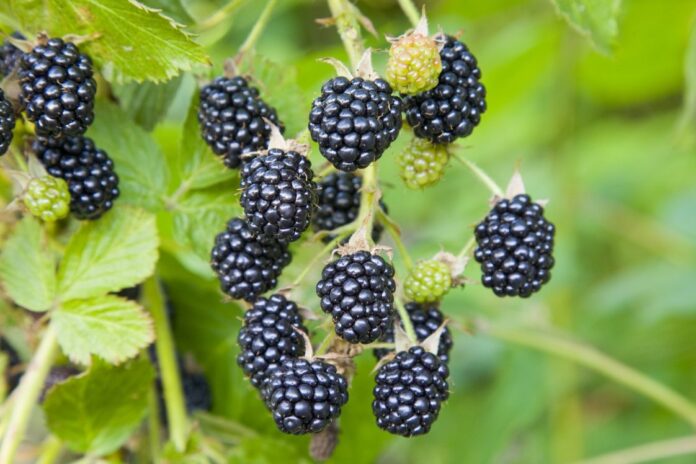AUBURN UNIVERSITY, Ala. – Blackberry cultivars are prime examples of selective plant-breeding modifications to fruit and wild-blackberry growth. While the fruit from a blackberry cultivar is superior in comparison to wild blackberries, these plants require significant maintenance in a cultivated setting.
Blackberry cultivars require specific conditions, whereas wild blackberries only need one — full sun. Chip East, an Alabama Cooperative Extension System regional agent, said to cultivate a sweet, productive blackberry, it takes some work.
“Blackberry cultivars grow best in full sun and should be irrigated in times of drought,” East said. “Plants should be trained correctly and pruned correctly. Weeds should also be managed, with proper soil pH and good internal soil drainage.”
Growing conditions and habits
Whether planting blackberries for a home garden or as a commercial farmer, it is important to know the proper growing conditions and the plants’ growth habits.
“Plant location is important with regards to winter injury,” East said. “It’s common for blackberries to start blooming before the danger of frost is over.”
It is best to avoid any low-lying areas where cold air settles. Planting on a slope or at the top of a slope will allow cold air to drain away from the plant. Trees growing around the field can also hold in the cold temperatures.
“A grower might be able to do something about some of these issues,” East said. “However, freezing temperatures during blooming are always a concern.”
The growth habit of a blackberry cultivar can be erect, semi-erect or trailing. East recommends spending time studying the different cultivars before deciding which blackberry to plant in a given location. The trailing and semi-erect plants require a trellis, while erect plants may not need one.
“When planting more than one row of blackberries, the rows should be about 12 feet apart,” East said. “In-row spacing can vary for each cultivar, however trailing blackberry cultivars need to be spaced about 10 feet apart. This allows the plants to grow about 5 feet in either direction.”
Growers should trellis and maintain the erect plants at the recommended 3-foot height. Then the in-row spacing would need to be 3 feet apart. When trellising erect plants, it is common to plant them about 5 to 6 feet apart.
Thorny or thornless
The next step is to choose thorny or thornless plants. While thornless options seem to be a less painful choice, it does not necessarily mean they are better plants.
Thorny plants are extremely productive because of their aggressive growth habit and superior disease resistance. There are available cultivars that grow large fruit on both thorny and thornless plants.
Read East’s Extension Brief, “Blackberry Cultivars” for more information about thorny and thornless varieties that are available for cultivation in Alabama.
More information
Additional information about commercial blackberry production is available in the Alabama Extension publication, “Commercial Production Guide: Blackberry & Raspberry.” Learn more about other backyard gardening topics by visiting the Alabama Extension website at www.aces.edu.



















